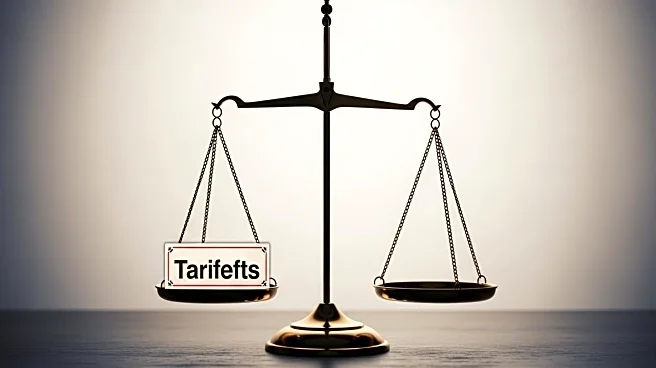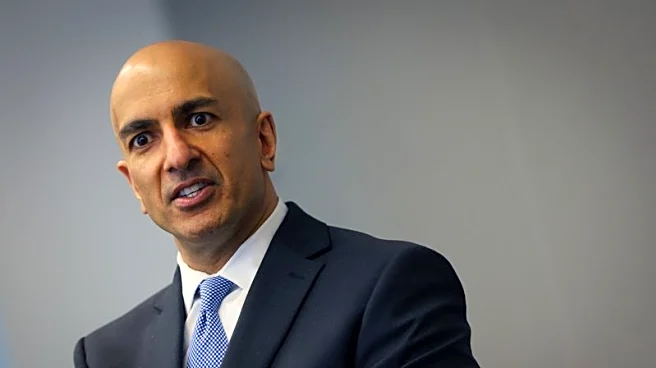What's Happening?
The Federal Reserve recently enacted a quarter percentage point interest rate reduction, a decision that revealed significant internal disagreements among officials regarding future policy directions. The Federal Open Market Committee voted 11 to 1 in favor of the rate cut, but the accompanying 'dot plot' indicated a sharp divide in expectations for further cuts and forecasts for GDP, inflation, and unemployment. Despite the consensus on the rate cut, the Summary of Economic Projections highlighted uncertainty, with inflation not expected to reach the Fed's 2% target until 2028. The labor market and price stability remain areas of concern, with varying opinions on the number of rate cuts needed in the coming years.
Why It's Important?
The Federal Reserve's decision and the underlying divisions have significant implications for the U.S. economy. The uncertainty in policy direction could affect economic stability, influencing inflation rates and employment levels. The differing views within the Fed reflect broader economic challenges, including a weakening labor market and persistent inflation, which could lead to stagflation. The rate cut and its implications are crucial for businesses and investors, as they navigate potential changes in borrowing costs and economic conditions. The Fed's approach to managing these issues will be pivotal in shaping economic policy and maintaining market confidence.
What's Next?
The Federal Reserve will continue to monitor economic indicators and adjust its policy as necessary. Chair Jerome Powell emphasized the importance of using the 'dot plot' as a set of possibilities rather than fixed targets, suggesting flexibility in future decisions. The Fed's internal dynamics, including the influence of new appointees like Stephen Miran, will play a role in shaping policy. As the Fed seeks to balance price stability and employment, its actions will be closely watched by stakeholders, including the White House and financial markets, for indications of future economic direction.
Beyond the Headlines
The internal divisions within the Federal Reserve highlight the complexities of monetary policy in a challenging economic environment. The differing perspectives among officials underscore the difficulty in achieving consensus on key issues like inflation and employment. The Fed's approach to these challenges will have long-term implications for its credibility and effectiveness in managing economic stability. The evolving dynamics within the Fed may also influence future appointments and policy decisions, impacting the broader economic landscape.











